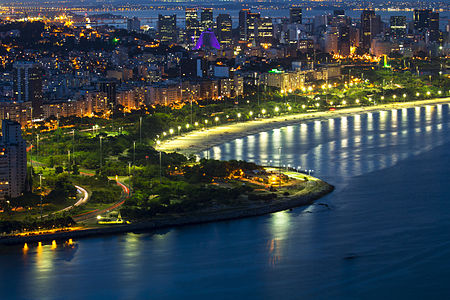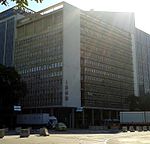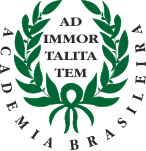Academia Brasileira de Letras (ABL) (Portuguese pronunciation: [akadeˈmiɐ bɾaziˈlejɾɐ dʒi ˈletɾɐs] (listen) English: Brazilian Academy of Letters) is a Brazilian literary non-profit society established at the end of the 19th century. The first president, Machado de Assis, declared its foundation on December 15, 1896, with the by-laws being passed on January 28, 1897. On July 20 of the same year, the academy started its operation.
According to its statutes, it is the pre-eminent Portuguese council for matters pertaining to the Portuguese language. The academy is considered the foremost institution devoted to the Portuguese language in Brazil. Its prestige and technical qualification gives it paramount authority in Brazilian Portuguese, even though it is not a public institution and no law grants it oversight over the language. The academy's main publication in this field is the Orthographic Vocabulary of the Portuguese Language (Vocabulário Ortográfico da Língua Portuguesa) which has five editions. The Vocabulary is prepared by the academy's Commission on Lexicology and Lexicography. If a word is not included in the Vocabulary, it is considered not to exist as a correct word in Brazilian Portuguese.
Since its beginning and to this day, the academy is composed of 40 members, known as the "immortals". These members are chosen from among citizens of Brazil who have published works or books with recognized literary value. The position of "immortal" is awarded for the lifetime. New members are admitted by a vote of the academy members when one of the "chairs" become vacant. The chairs are numbered and each has a Patron: the Patrons are 40 great Brazilian writers that were already dead when the academy was founded; the names of the Patrons were chosen by the Founders as to honour them post mortem by assigning patronage over a chair. Thus, each chair is associated with its current holder, her or his predecessors, the original Founder who occupied it in the first place, and also with a Patron.
The academicians use formal gala gilded uniforms with a sword (the uniform is called "fardão") when participating in official meetings at the academy. The body has the task of acting as an official authority on the language; it is charged with publishing an official dictionary of the language. Its rulings, however, are not binding on either the public or the government.











